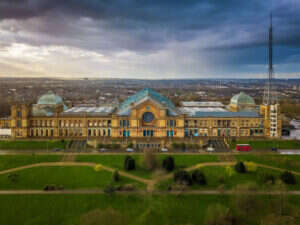One of Theresa May’s beloved slogans during the less-beloved election of 2017 was all about a so-called “magic money tree”. Whenever somebody complained that her manifesto didn’t offer enough funding for things like schools, hospitals, or nurses’ wages – or when somebody mentioned that Jeremy Corbyn’s manifesto offered more funding for things like schools, hospitals, and nurses’ wages – Theresa would develop a tiny twinkle behind the eye and say there was “no magic money tree”.
Fake news. There is a magic money tree – albeit a very small one – and it’s called the night tube.
Despite the long series of delays, union disagreements, pushed-back launch dates, and theories that the next version of Waiting for Godot at the National Theatre would be called Waiting for the Night Tube, we now have 24-hour services on the Jubilee, Victoria, Central, and (some) of the Northern line on Friday and Saturday nights.
And though it hasn’t been running for long, the early evidence shows that even such a limited service has had an astonishing effect. Mark Wild, the managing director of London Underground, has said that passenger numbers were 50 per cent higher than forecast over the first few months of the service to November 2016.
More than 100,000 people used the night tube during the first weekend it ran, and that popularity has shown no great signs of abating.
A celebratory night tube train on the Victoria line at Pimlico. Image: Alex Nevin-Tylee.
The London Assembly’s Transport Committee chair – Liberal Democrat Caroline Pidgeon – said that TfL had expected the night tube to run at a loss for the first three years of its service, racking up a total bill of £24.6m. This no longer looks likely, and TfL operation heads say they’ll break even much earlier.
But it’s more than just the popularity of the service itself that’s important.
Worldpay is the biggest payments processor in the UK – as in, they sell a whole load of card machines (mobile and wired) and also handle online payments – and has been doing pretty well recently, despite possible concerns about the impact of Brexit. The firm took a look at card transaction data for the late-night period, the hours between 1am and 4:30am, in the London area.
Its analysis showed that takings rose 75 per cent from before the launch of the night tube to June of this year. Almost a third of that late-night spending came in the borough of Westminster – the city’s nightlife hub and where the night tube services on the Jubilee, Central, Victoria, Piccadilly, and Northern lines intersect – but that increases in spending also occurred in more far-flung districts areas.
A map of current night tube services. Image: TfL
An increase of 75 per cent in takings is not something to be sneered at – essentially, the amount of money that businesses in central London made at night almost double because of the night tube, or at the very least at the same time as the introduction of the night tube. That’s huge, and is pretty much good news for everyone.
The fact that businesses re making more money means that they’re able to grow – perhaps by opening up new branches or by hiring new staff – which means more jobs are on offer, meaning lower unemployment rates. This in turn means more taxes collected from those people earning those wages, which in turn means more money to be able to spend on nice things like schools, hospitals, and night tube services.
But while TfL have admitted that they won’t be able to extend the night tube to the sub-surface lines – Circle, District, Hammersmith and City and Metropolitan lines – in the near future because of what they call ‘open heart surgery’ on the signalling systems, they’ve not ruled it out. Night tube services expanding to these areas – and, if they’re so inclined – to the other branch of the Northern line via Bank, or to the Bakerloo line, would mean a further boon for businesses.
Oh yes – and the night overground service between Dalston Junction and New Cross Gate, which was today confirmed to start running from December, will also be a huge boost to economic activity at night in the city’s emergent eastern fringe.
So there is a magic money tree. There has been this whole time.
It’s called sensible investment in public services. Welcome to the night tube.
Jack May is a regular contributor to CityMetric and tweets as @JackO_May.
Want more of this stuff? Follow CityMetric on Twitter or Facebook.








